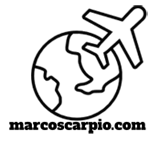Before the advent of the Web
______________________________________________________________________________________________________________________________
The PC had come a very long way but it had always been the days Microsoft (1975) and Apple (1976) were founded that had marked the watershed era of the industry. Until today, both companies represent the best in PC software and hardware.
Here are a few tidbits…
The PC had come a very long way but it had always been the days Microsoft (1975) and Apple (1976) were founded that had marked the watershed era of the industry. Until today, both companies represent the best in PC software and hardware.
Here are a few tidbits…
The Macintosh®️ personal computer introduced by Apple in 1984 had a 9" monochrome monitor (made by Sony™), a 400 KB 3.5" single-sided floppy drive (also made by Sony™), 128 KB of DIPP RAM, 64 KB of ROM (which loaded the "bootstrap" program - aka, System 1.0) and a graphical user interface (GUI). It was powered by a Motorola MC68000 (32-bit) chip at 7.4 MHz. And, of course, it had the now ubiquitous 'mouse'.
The ‘mouse’ was the creation of Doug Engelbart at the Stanford Research Institute in 1963. Mr. Engelbart, before he passed away in 2012, spent most of his time in Fremont, California - - the place where Apple first churned out the original (1984) Macintosh.
Ex-disc jockey and MIT graduate who created the venerable Lotus 1-2-3 integrated spreadsheet and graphing software application in 1982. The product allowed the IBM-PC and clones to become the personal computer of choice for the business and government sectors in the 80s and well into the early 90s.
In July 1995, Lotus Development Corp. was eventually bought out by IBM for US$ 3.5 billion.
In July 1995, Lotus Development Corp. was eventually bought out by IBM for US$ 3.5 billion.
The product that propelled Microsoft to dominate the personal computer software market in the 80s was not even their founders’ own creation. MS-DOS was a modified version of QDOS (Quick and Dirty Operating System) that was written by Tim Paterson of Seattle Computer Products, which Microsoft bought the rights in late 1980.
After being ousted at Apple in 1985, Steve Jobs formed NeXT, Inc. In early Oct. 1988 he came out with the NeXT workstation, aka "the Cube" —a sleek, matte-black, Unix-based, Motorola 68030-powered box. It was offered primarily in the higher education market. When he returned to Apple in 1997, he ‘resurrected’ this machine when Apple released the Mac G4 Cube in 2002.
The software application that catapulted the Apple II as a business tool rather than just a hobbyist’ toy. It was the creation of Daniel Bricklin and Bob Frankston who co-founded Software Arts in 1979. Another firm, VisiCorp - co-founded by Dan Fylstra and Peter R.Jennings - was allowed to publish and market it in the same year.
Before MS Excel, there was Multiplan. Codenamed, ‘Electronic Paper’ by Microsoft and released in 1982, it was intended to compete with VisiCalc - the dominant spreadsheet application during that era. Written in C language, it was a ‘portable’ app that allowed it to be used in multiple hardware platforms.
Michael Moritz, author of the "The Little Kingdom" - one of the early books about Apple Computer published in 1984 - is now a billionaire venture capitalist (VC) in Silicon Valley. He lives in San Francisco and owns an entire village in Tuscany (Italy). Not bad... after being a "mere" TIME reporter for quite a while.
